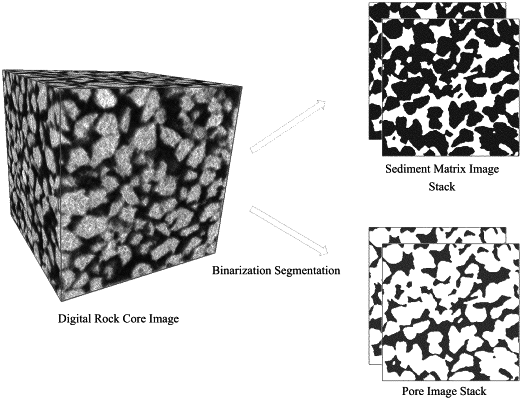| CPC G06T 5/30 (2013.01) [G01N 23/046 (2013.01); G06T 7/11 (2017.01); G06T 7/136 (2017.01); G06T 17/00 (2013.01); G06T 2207/10081 (2013.01)] | 1 Claim |

|
1. A 3D modeling method for pore-filling hydrate sediment based on CT image, comprising steps of:
step 1, scanning remolding or in situ rock cores without natural gas hydrate by CT to obtain digital rock core image stacks;
step 2, adjusting the gray threshold of the digital rock core image stacks, conducting binarization segmentation to obtain a sediment matrix and a pore, and respectively saving as the image stacks;
step 3, firstly eroding a pore image stack obtained in step 2 at x pixel and then dilating at x pixel to obtain a pore-filling hydrate image stack;
step 4, performing image subtraction; and subtracting the pore-filling hydrate image stack obtained in step 3 from the pore image stack obtained in step 2 to obtain a new pore image stack corresponding to the pore-filling hydrate image stack obtained in step 3;
step 5, splicing and combining the sediment matrix image stack obtained in step 2, the pore-filling hydrate image stack obtained in step 3 and the new pore image stack obtained in step 4 to form a digital rock core image stack with the sediment matrix, the pore-filling hydrate and the pore, which is the digital rock core image stack of the pore-filling hydrate sediment;
step 6, repeatedly executing step 3 to step 5, and adjusting x value to obtain the digital rock core image stacks of the pore-filling hydrate sediment with different hydrate saturations.
|